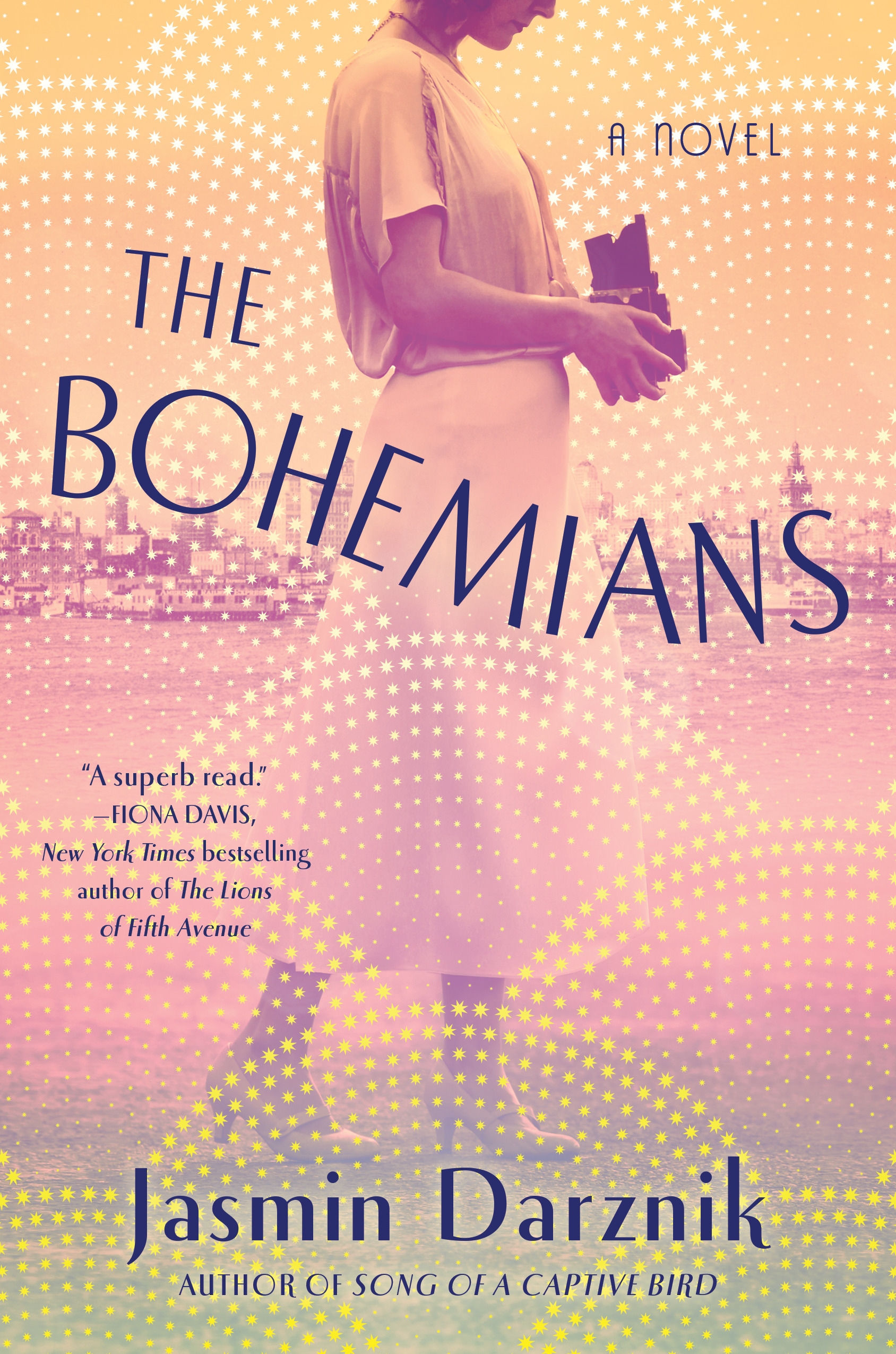 Reviewed by Claire Hamner Matturro
Reviewed by Claire Hamner Matturro
The Bohemians
by Jasmin Darznki
Ballantine
2 July 2021, ISBN: 9780593129425, Hardback, 352pp, $48.99
With crisp, eloquent prose, author Jasmin Darznik weaves a compelling story that brings the historical Dorothea Lange to life in all her glory and with all her conflicts in The Bohemians. It’s a dazzling book, capturing San Francisco in the roaring Twenties as well as portraying Lange as a fully realized, talented young woman as she grows into the person who would become the world-famous photographer.
Darznik’s impeccable research enhances the plot, and the novel’s sense of place and time are revealing and evocative. It isn’t just Lange whose life and career are showcased in the novel, but Lange’s husband of a few years, the well-regarded artist Maynard Dixon, and a host of other photographers such as Ansel Adams and journalists as well. Darznik takes a more creative hand with Caroline Lee, the part-Chinese woman who befriends Lange early in the book as little is known of Lee. The friendship between the two women is central to the novel, and the discrimination and violence against Lee due to her Asian blood rings painfully true. In her historical notes on Lee, the author states that the book “is in part my imagining of her story.” But with the other characters, Darznnik sticks close to the known events, yet lifts them up and out of the flat page of facts as the best historical novelists do by giving life to them through dialogue, insights, and close-ups of their personalities and emotions.
The energy and beauty of San Francisco in 1918 when the book opens is also captured in the book and displayed for readers with delicious details and expressive writing:
[T]he city belonged to the bohemians, which is to say to the artists, poets, and writers—and the vast, varied company they attracted. You saw them everywhere, but the cafes, bakeries, restaurants, and pubs of North Beach, the small Italian village on Telegraph Hill, were bursting with them. They’d all come from somewhere else, and they all had a story to tell. That was another thing about San Francisco: Every time you met someone, it was like stepping into a story just as they were making it up. And now I was one of them. Or starting to be.
Lange, who limped as a result of childhood polio, arrives in San Francisco in the opening chapter full of hope and aspirations. She had worked in New York as an assistant to a famous photographer, who gifted her with an excellent camera, but Lange knew she was dead-ended there. Boldly, she crossed the country to reinvent herself “at nearly twenty-three, eager and restless, with just-bobbed hair.” Despite her “ideas of who and how and where I wanted to be,” she is rudely awakened to the difficulties facing her when her meager funds are stolen. After a homeless night, she meets Lee who immediately reaches out to help Lange. Soon after, Lange pawns her camera for funds to get a room in a dismal boarding house. From that humble beginning, and with Lee’s help, she finds her way into a circle of photographers, journalists, artists, and bohemians. With the financial backing of a businessman and the support of her friends, Lange opens a portrait studio and Lee is her assistant in running what soon becomes a successful venture. The Spanish flu pandemic, Lange’s troubled marriage, violence against Lee, and the Great Depression will all soon challenge them professionally and personally and upend the steady success of their studio.
The initial meeting of Lange and western painter Dixon and the resulting near obsession Lange develops for the troubled, older artist who will become her husband is well done. There is the foreshadowing of things to come, especially as Lee cautions Lange against the relationship.
The Spanish flu sweeps through San Francisco and the novel in an eerily similar way to our own current headlines. The book captures the fear in passages such as:
By October, fifteen thousand San Franciscans had fallen ill. Fear flew from person to person. A touch or a breath and you might die. Everywhere you looked, you saw a sea of white. It was suddenly illegal to go outside without a gauze mask. The one time I saw someone without one, a policeman hauled him off, but not without a sharp stab of the baton. … With the city shut down, there was nowhere to go. Worse we had no work.
Lange’s own story tracks the history of the country, and with the Great Depression, she does her most famous work among the poor and homeless. The segments of the novel about Lange and her photography during that era are more curtailed than the portions about Lange’s early days in San Francisco. Yet the brief sentences about Lange’s most famous portrait—“Migrant Mother”—are beautifully well written even if concise. “What seized my attention, what held me there, was the sense of a whole life, a whole story, in the woman’s expression.”
While it can be imprecise to learn history from a novel, The Bohemians describes a time and place and its characters so vividly that it surely enhances what one might learn from the straight historical texts. This is a fine, worthy book with its defined and canny captures of Lange, Lee, Dixon and others, and an engaging, rewarding read.
About the reviewer: Claire Hamner Matturro has been a newspaper reporter in Alabama, a lawyer in Florida, and has taught at Florida State University College of Law and University of Oregon School of Law. An author of seven prior mysteries and legal thrillers, she and her husband live on the Gulf Coast of Florida. Her newest book, Wayward Girls (Red Adept Publishing Aug. 2021), is with co-author Penny Koepsel. Claire remains active in writers’ and environmental groups and is an associate editor at Southern Literary Review. Visit her at www.clairematturro.com